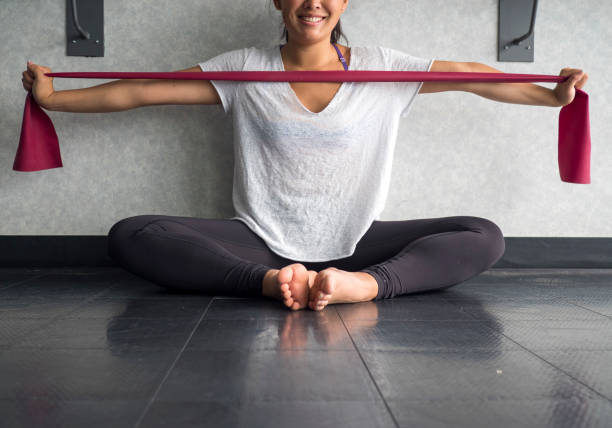As the name suggests, a resistance band works by adding some natural resistance to your movements, which makes them harder. For example, if you wrapped a rubber band around your index and middle fingers and then tried to move them apart, it would get harder to move your fingers as the rubber band began to stretch. Because of this resistance, our muscles have to work harder, which helps them get stronger.
A wholesale resistance bands is basically a much bigger rubber band that you can tie to itself to make a circle or to a fence or other object and then hold onto the other end to do resistance exercises. As you'll see below, this simple piece of equipment can help you in a lot of different ways during your recovery.
Specific Muscle Targeting –
The band is a very versatile piece of equipment because you can hold it in one hand or loop it around your leg to work almost any muscle group in your body. Your physical therapist can show you how to do different moves and exercises that will help you build whatever muscle groups you want.
Stabilization –
Resistance training also helps stabilize the muscles and tissues that hold your joints in place. Resistance band exercises are great for athletes whose shoulders, hips, and knees take a lot of stress.
Doesn’t Overload the Patient –
If you try to lift too much weight in the weight room when you're trying to do a lift, you can hurt your muscles. With a resistance band, the amount of resistance you feel depends on how hard you pull on it and how long it is. This makes it easy to control the level of resistance you'll face, and it's unlikely that you'll hurt yourself from too much resistance.
Adjustable –
By tying the band off or making it shorter, you can also easily change the amount of resistance you face. The more resistance you face, the less slack there is. This means you can easily change the resistance as your rehab goes on, giving your muscles more of a challenge as they get stronger and develop.
Versatile –
As we said in the first point, a resistance band roll is very flexible and can be used to work out a lot of different muscles. Some much bigger pieces of equipment only help a small group of muscles, but your resistance band can work your shoulders, back, hips, glutes, hamstrings, knees, calves, and more.
Cost –
Resistance bands are very cheap compared to other therapy tools. Depending on the size of your resistance band, it costs about $2 per yard, and sometimes clinics will just give them to the patient so they can start their home exercise routine right away.

